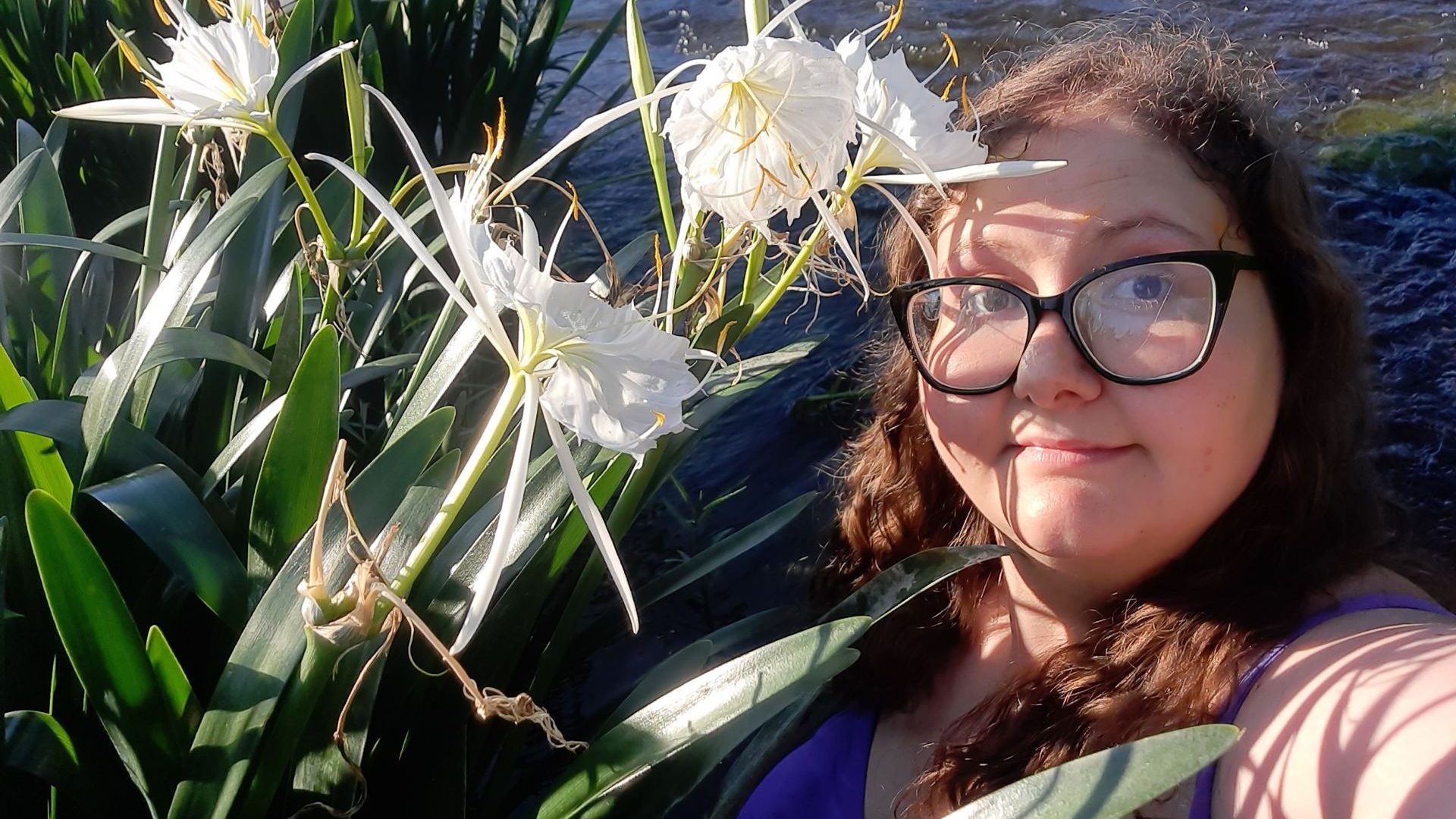By Jera Dills
Gabby Dunham is a Volunteer Monitor in the Auburn area. Read more about Gabby in her interview below!

Where do you call home?
I call Auburn, Alabama my home. I have lived in many different states throughout my life, but Alabama called me back for college. The amazing wildlife, plants, ecosystems, people, and communities here really are close to my heart.
What got you interested in Alabama Water Watch, and why is water quality monitoring important to you?
I first found out about AWW through my job. I am a lab tech at the Plant Diagnostic lab at Auburn University, which is in the same building as AWW. I found out about a water chemistry training last year and convinced two of my coworkers to become certified monitors with me. Last year there was a train derailment in Ohio that spilled many hazardous chemicals into local waters. Seeing the images of dead fish and macroinvertebrates really got me invested in thinking about water quality. Since then, I’ve wanted to do what I can for our local streams to protect the people and wildlife that use these waters.
What is the most interesting thing you have seen while sampling?
The most interesting thing I’ve found while sampling is fungi related. I found a dead insect on an American beech tree at one of my water monitoring sites. After showing pictures to my lab’s entomologist and using iNaturalist, I discovered it was a zombie-ant fungi known as Ophiocordyceps unilateralis. This fungus species infects ants, grows inside its body, drains all its nutrients, and controls the ant. It forces the ant to climb up a plant to get the perfect conditions to grow. In the final act, the fungus forces the ant to lock its mandibles on the surface of the plant. Finally, it sends a long stalk out of the ant’s head which releases a capsule of spores to fall on the next victims.
What are your biggest challenges/issues in your favorite watershed?
The Parkerson Mill Creek Watershed has the most issues out of all the watersheds that I monitor. This watershed often gets a lot of point source pollution on campus from construction sites. When new buildings are being constructed, runoff of chemicals, debris, and sediments can get into local waters. We have seen signs of sediment runoff in our streams that are a part of this watershed. Another issue with this watershed is trash. Many people unfortunately litter directly or indirectly into streams. Heavy rains and storms can move that litter further into watersheds. This litter can harm wildlife in many ways through physical and chemical harm. Thankfully, many organizations partner to do stream cleanups annually at the Parkerson Mill Creek Watershed. I also had an amazing student Elizabeth Stricklin, who helped clean my sites in this watershed for a whole semester. We filled multiple bags of trash from this watershed each month.
Why would you encourage others to consider becoming volunteer monitors?
There are so many reasons I encourage people to do amazing citizen science programs like Alabama Water Watch. The first reason would be to protect your local streams. We all depend on clean water, and we need to protect our local drinking water sources from pollution. The second reason would be to protect wildlife and their ecosystems. Many wildlife species like fish, amphibians, and macroinvertebrates are indicator species that tell us about our stream health. The presence or absence of these species can tell us a lot about our waters. We need wildlife for ecosystems to properly function. My third reason would be connecting with your community. I have had the amazing opportunity to share my journey as an AWW monitor for the last year. I’ve made many new friends and professional connections through this program. I also have been able to teach many members of our community about water quality through my monitoring. My last reason to become a volunteer monitor is simply because it is fun!
You get to learn about science and how your stream functions. Just getting to be outside is great. You learn about the phenology of your sites and the wildlife that uses them. The mental and physical benefits alone are great too!
